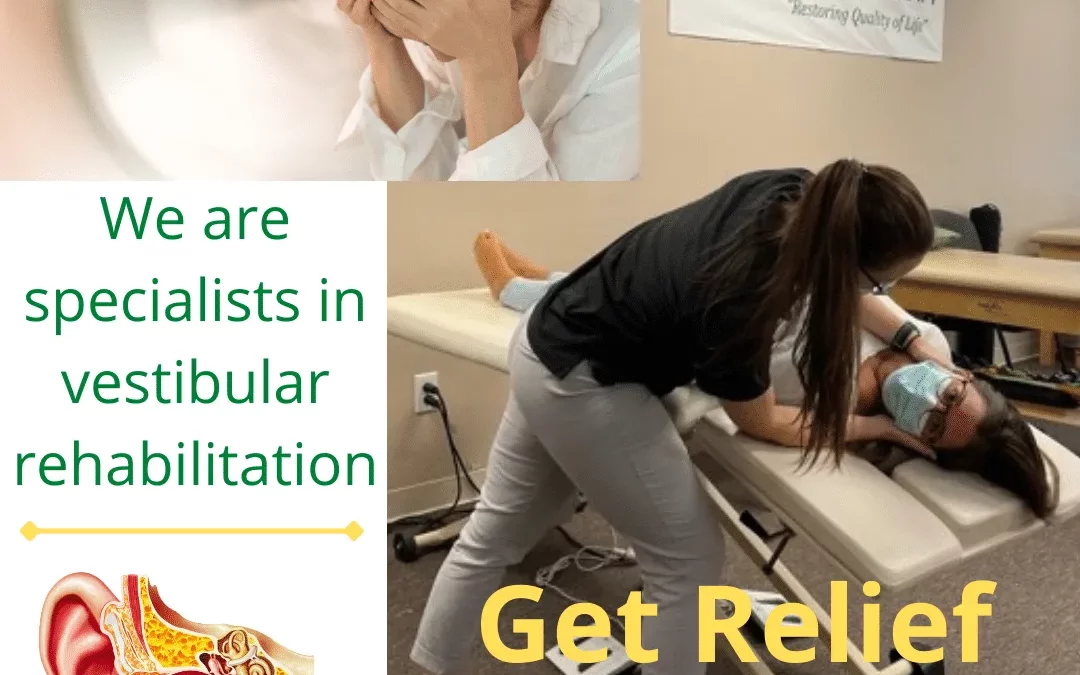Benign Paroxysmal Positional Vertigo
Do you ever experience the room spinning when lying down in bed? Do you feel a spinning sensation when turning your head quickly or when bending over to pick something up off of the floor? Do you feel unsteady when looking up? Do you have difficulty maintaining your balance when performing daily activities? You may have what is called benign paroxysmal positional vertigo (BPPV).
What is Benign Paroxysmal Positional Vertigo?
Benign Paroxysmal Positional Vertigo, also known as BPPV, is a dysfunction of the inner ear and one of the most common causes of vertigo. BPPV results in short periods of vertigo with positional changes of the head.
What Causes Benign Paroxysmal Positional Vertigo?
Calcium carbonate crystals, also called otoconia, typically reside in a part of the inner ear called the utricle where they assist in recognizing head position and maintaining balance. BPPV occurs when these crystals break off and become displaced within the semicircular canals. There are various events that can cause this displacement of crystals such as infection, head injury, aging, or it can occur without any notable cause. With head movement, these crystals stimulate nerve endings within the semicircular canals, giving the illusion of spinning or dizziness.
What Are the Main Symptoms of BPPV?
Symptoms of BPPV are triggered by positional changes of the head. The most common provocative movements are rolling over in bed, bending over to pick something up off the floor, looking up, and quick head movements. Symptoms can include spinning sensation, nausea, loss of balance, and lightheadedness.
What Can Specialized Physical Therapy Do To Help Me?
At Specialized Physical Therapy, your first treatment session will begin with several questions regarding your symptoms to help distinguish the cause of your vertigo. If BPPV is suspected, a series of positional tests will be performed to determine which canal is affected. Based on the results, your therapist will then take you through a treatment of various head positions to help the crystals migrate from the semicircular canals and back into the utricle, where they are meant to reside.
What Can I Expect Following Treatment?
Following treatment, your therapist will instruct you to sit for a few minutes to allow the crystals time to settle and avoid quick bursts of vertigo. You will then be instructed to avoid laying on your affected side and turning in that direction for the next 24-48 hours following your treatment as the crystals continue to settle. You may feel increased symptoms during this time as the crystals are settling. However, after 48 hours, you should begin feeling an improvement. You will then be instructed in following up with your therapist to determine if further treatment is necessary.
Your physical therapist will teach you exercises to help reduce your symptoms and improve your balance. Once treatment is completed, you should be able to return to your usual activities without dizziness or instability.



